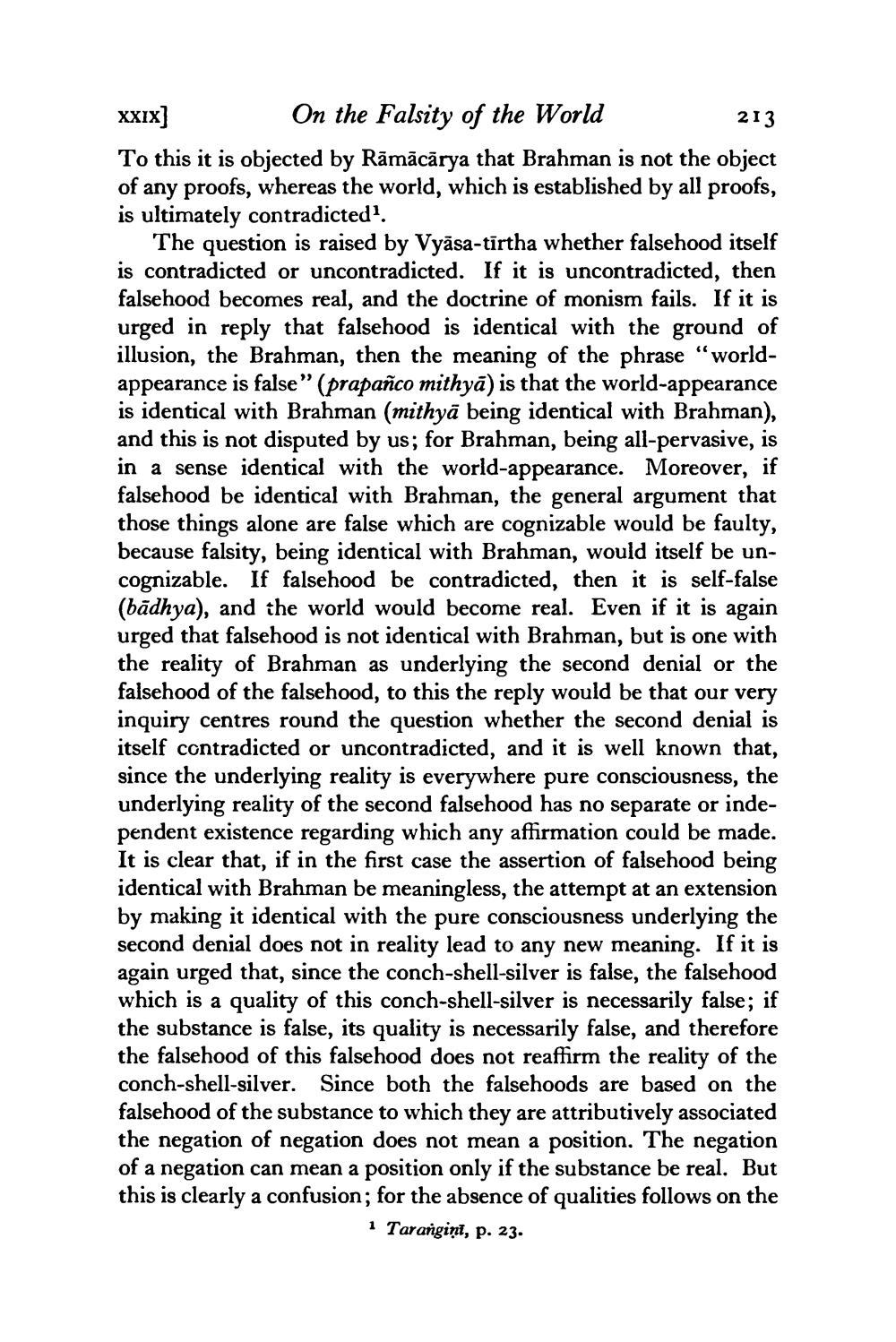________________
xxix] On the Falsity of the World
213 To this it is objected by Rāmācārya that Brahman is not the object of any proofs, whereas the world, which is established by all proofs, is ultimately contradicted?.
The question is raised by Vyāsa-tīrtha whether falsehood itself is contradicted or uncontradicted. If it is uncontradicted, then falsehood becomes real, and the doctrine of monism fails. If it is urged in reply that falsehood is identical with the ground of illusion, the Brahman, then the meaning of the phrase "worldappearance is false” (prapañco mithyā) is that the world-appearance is identical with Brahman (mithyā being identical with Brahman), and this is not disputed by us; for Brahman, being all-pervasive, is in a sense identical with the world-appearance. Moreover, if falsehood be identical with Brahman, the general argument that those things alone are false which are cognizable would be faulty, because falsity, being identical with Brahman, would itself be uncognizable. If falsehood be contradicted, then it is self-false (bädhya), and the world would become real. Even if it is again urged that falsehood is not identical with Brahman, but is one with the reality of Brahman as underlying the second denial or the falsehood of the falsehood, to this the reply would be that our very inquiry centres round the question whether the second denial is itself contradicted or uncontradicted, and it is well known that, since the underlying reality is everywhere pure consciousness, the underlying reality of the second falsehood has no separate or independent existence regarding which any affirmation could be made. It is clear that, if in the first case the assertion of falsehood being identical with Brahman be meaningless, the attempt at an extension by making it identical with the pure consciousness underlying the second denial does not in reality lead to any new meaning. If it is again urged that, since the conch-shell-silver is false, the falsehood which is a quality of this conch-shell-silver is necessarily false; if the substance is false, its quality is necessarily false, and therefore the falsehood of this falsehood does not reaffirm the reality of the conch-shell-silver. Since both the falsehoods are based on the falsehood of the substance to which they are attributively associated the negation of negation does not mean a position. The negation of a negation can mean a position only if the substance be real. But this is clearly a confusion; for the absence of qualities follows on the
1 Tarangini, p. 23.




